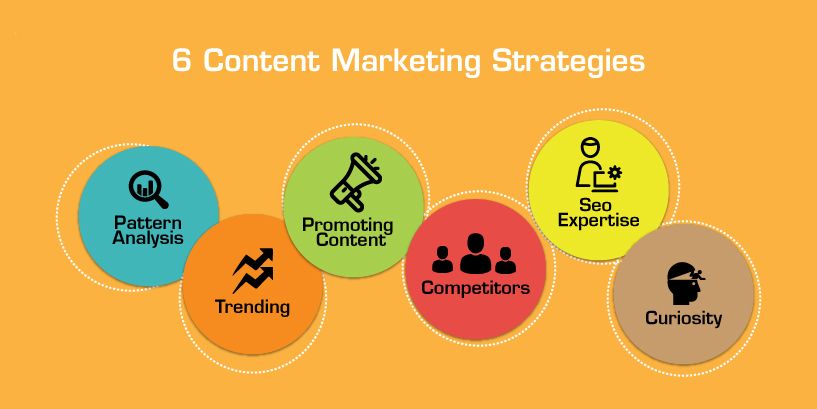In the vast and ever-evolving landscape of content marketing, developing a robust strategy is paramount for businesses aiming to cut through the noise, engage their audience effectively, and achieve their marketing objectives. However, with the myriad of platforms, formats, and tactics available, navigating the content landscape can be daunting. In this article, we’ll explore key tips for developing a successful Content Marketing Strategy that drives results.
Understanding the Content Landscape
Before delving into the specifics of crafting a content marketing strategy, it’s crucial to grasp the dynamics of the content landscape. Content is the cornerstone of modern marketing, serving as a vehicle for delivering value, establishing authority, and fostering relationships with customers. The content landscape encompasses various channels, including websites, blogs, social media platforms, email newsletters, podcasts, videos, and more, each offering unique opportunities for engagement and interaction.
Define Your Objectives and Audience
The first step in developing a content marketing strategy is to define clear objectives and identify your target audience. Start by outlining what you aim to achieve with your content, whether it’s increasing brand awareness, driving website traffic, generating leads, or nurturing customer relationships. Next, conduct thorough audience research to understand the demographics, preferences, and pain points of your target audience. Developing detailed buyer personas can help tailor your content to resonate with your audience’s needs and interests.
Conduct a Content Audit
Before creating new content, it’s essential to assess the performance of your existing content assets. Conduct a comprehensive content audit to evaluate the quality, relevance, and effectiveness of your content. Analyze metrics such as website traffic, engagement, social shares, and conversions to identify top-performing content and areas for improvement. Additionally, assess the alignment of your content with your brand messaging and business objectives.
Set Key Performance Indicators (KPIs)
To measure the success of your content marketing efforts, it’s essential to establish key performance indicators (KPIs) that align with your objectives. KPIs can vary depending on your goals but may include metrics such as website traffic, engagement rates, conversion rates, email open and click-through rates, social media followers, and customer lifetime value. Setting clear and measurable KPIs provides benchmarks for evaluating performance and tracking progress over time.
Develop a Content Strategy
Based on your objectives, audience insights, and KPIs, develop a comprehensive content strategy that outlines your approach to content creation, distribution, and promotion. Define key themes, topics, and messaging pillars that align with your brand identity and resonate with your target audience. Determine the most appropriate content formats and channels to reach your audience effectively, considering their preferences and behaviors.
Create High-Quality, Valuable Content
Quality should always take precedence over quantity when it comes to content creation. Focus on producing high-quality, valuable content that addresses the needs and interests of your audience. Whether it’s blog posts, articles, videos, infographics, or podcasts, ensure that every piece of content provides genuine value and aligns with your brand voice and tone. Aim to educate, entertain, inspire, or solve problems for your audience.
Optimize for Search Engines
Search engine optimization (SEO) is essential for ensuring that your content gets discovered by your target audience. Conduct keyword research to identify relevant search terms and incorporate them strategically into your content. Optimize your website structure, meta tags, and content formatting to improve your chances of ranking higher in search engine results pages (SERPs). Additionally, focus on creating high-quality, authoritative content that attracts backlinks from reputable websites.
Distribute and Promote Your Content
Creating great content is only half the battle—ensuring that it reaches your target audience is equally important. Develop a robust distribution plan to share your content across multiple channels, including your website, blog, social media platforms, email newsletters, and industry publications. Utilize both organic and paid promotion tactics to amplify your content’s reach and visibility. Tailor your distribution strategy to each platform and audience segment for maximum impact.
Engage and Interact with Your Audience
Building meaningful relationships with your audience is crucial for driving engagement and loyalty. Actively engage with your audience by responding to comments, addressing questions, and soliciting feedback. Encourage user-generated content and create opportunities for dialogue and interaction. By fostering a sense of community around your brand, you can strengthen relationships and build brand advocacy among your audience.
Measure, Analyze, and Iterate
Regularly monitor the performance of your Content Marketing Strategy efforts against your predefined KPIs. Utilize analytics tools to track and measure key metrics such as website traffic, engagement rates, conversion rates, and ROI. Analyze the data to gain insights into what’s working well and what can be improved. Use these insights to refine your content strategy, experiment with new tactics, and iterate based on audience feedback and market trends.
Conclusion
Developing an effective content marketing strategy requires careful planning, strategic thinking, and ongoing optimization. By defining clear objectives, conducting audience research, setting measurable KPIs, developing a comprehensive content strategy, creating high-quality content, optimizing for search engines, distributing and promoting content effectively, engaging with your audience, and measuring performance, businesses can navigate the content landscape successfully and maximize the impact of their content marketing efforts. By following these tips and continually refining your strategy based on data and insights, you can achieve your marketing goals and drive sustainable growth for your business.



